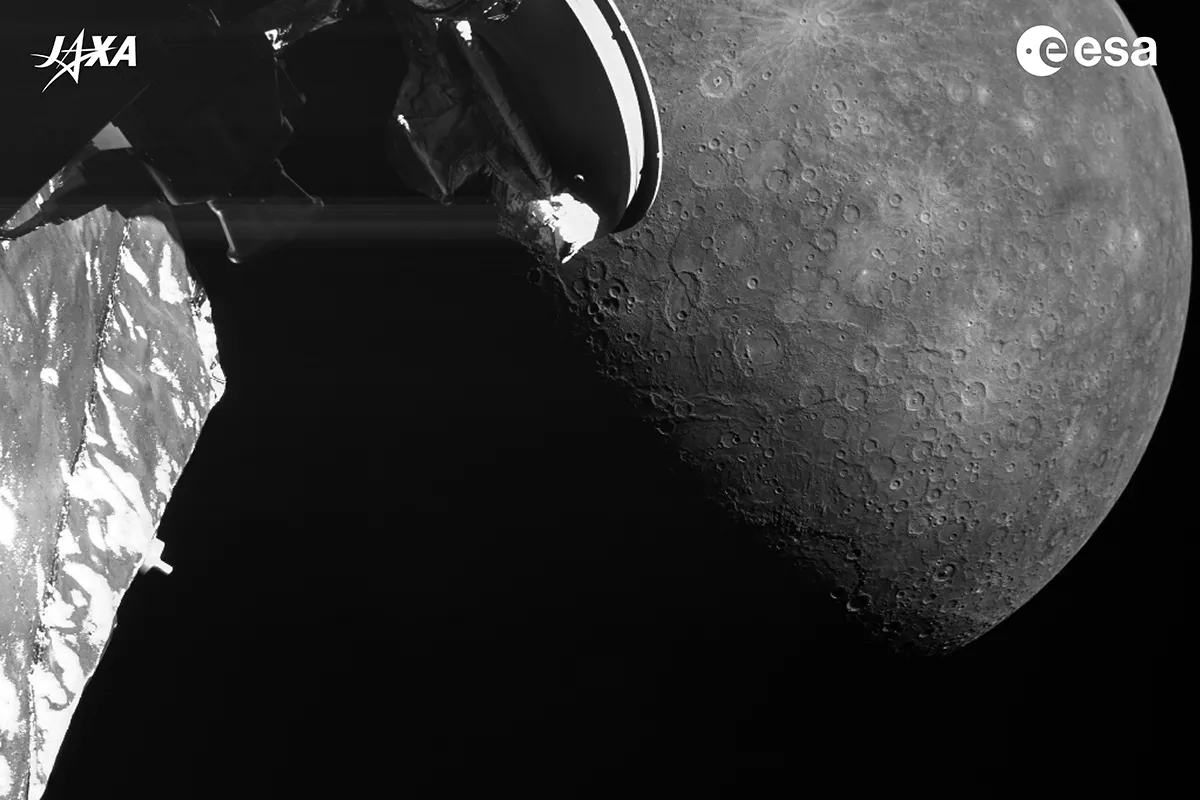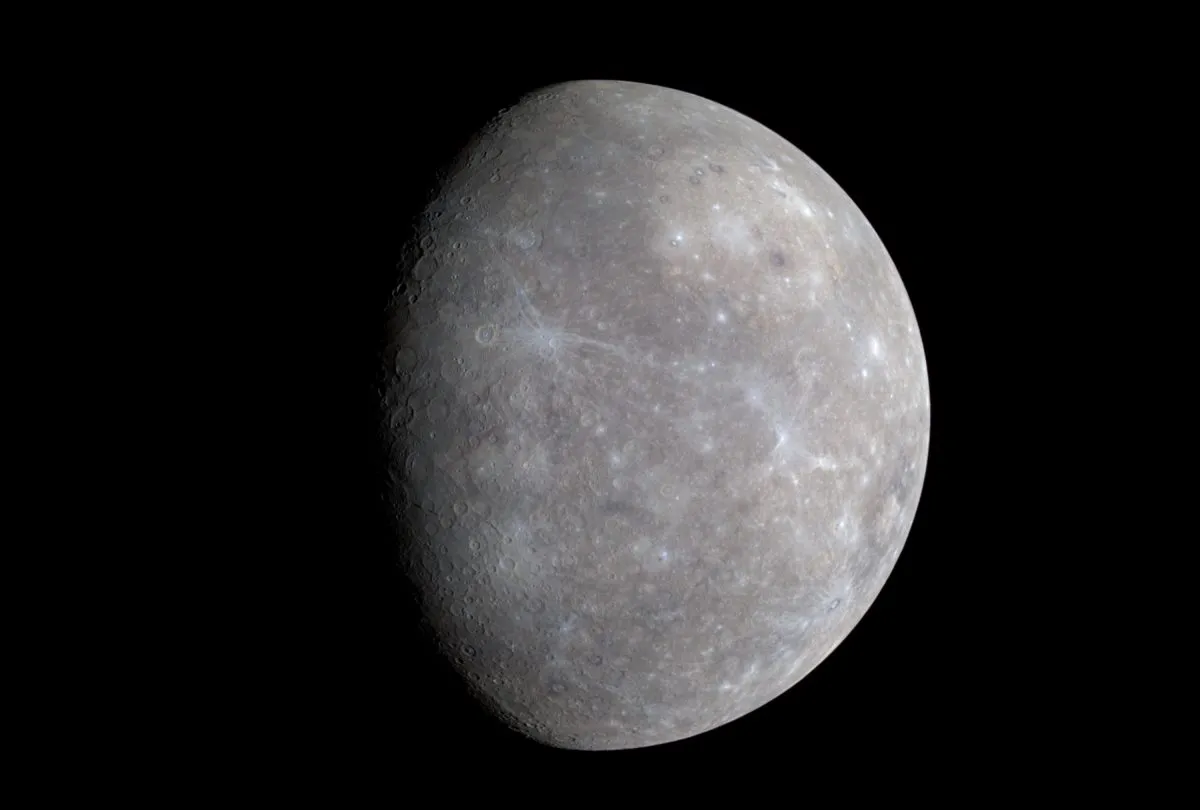Electrons raining down onto the surface of planet Mercury trigger x-aurorae, according to data from the European Space Agency's (ESA) Bepi Colombo mission.
Aurora on Earth is caused by a stream of charged particles emanating from the Sun - known as the 'solar wind' - hitting Earth's upper atmosphere
But Mercury has only a very thin atmosphere - known as an 'exosphere' - and this enables solar winds to interact directly with the planet's surface, causing x-ray aurora.

Bepi Colombo launched in October 2018 and in June 2023 sent back a series of flyby images of Mercury.
The spacecraft made its first Mercury flyby in October 2021, and an international team of planetary scientists have studied data from that flyby and published a paper on the results in the Nature Communications science journal.
Bepi Colombo is actually made of two separate craft: the Mercury Planetary Orbiter led by ESA, and the Mercury Magnetospheric Orbiter (MMO) led by the Japan Aerospace Exploration Agency (JAXA).
During the first Mercury flyby, Bepicolombo flew as close as 200km above the surface and the MMO was able to study various types of charged particles in the solar wind around the vicinity of the planet.
BepiColombo approached Mercury from the night side of the northern hemisphere and then made a close approach near the morning side of the southern hemisphere.

The spacecraft's instruments observed the structure and boundaries of the magnetosphere, and data also showed the magnetosphere was very compressed, which study authors say could be due to high pressure conditions in the solar wind.
High energy electrons from the solar wind rain down on Mercury's surface and, because they are not restricted by a thick atmosphere, they hit the surface and cause x-rays to be emitted, which generates aurorae.
Aurorae at Mercury had previously been observed by the MESSENGER mission, but the exact processes that cause the x-ray aurora had not been well understood.
"For the first time, we have witnessed how electrons are accelerated in Mercury’s magnetosphere and precipitated onto the planet’s surface," says study lead author Sae Aizawa of the Institut de Recherche en Astrophysique et Planétologie (IRAP).
"While Mercury’s magnetosphere is much smaller than Earth’s and has a different structure and dynamics, we have confirmation that the mechanism that generates aurorae is the same throughout the Solar System."
Read the paper at www.nature.com/articles/s41467-023-39565-4
Read more:

